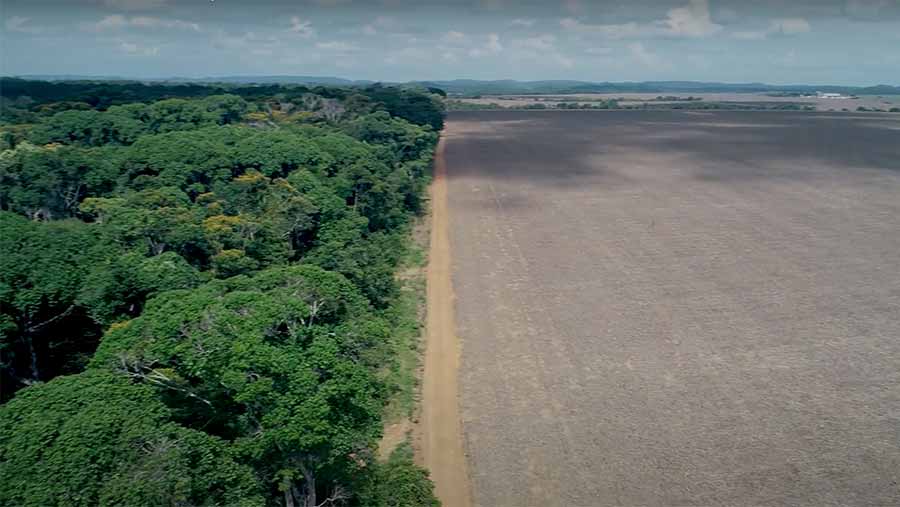ORFC 2023: New film links animal feed to deforestation in Brazil
 A still image from the video showing deforestation © Landworkers' Alliance
A still image from the video showing deforestation © Landworkers' Alliance A new documentary film commissioned by the Landworkers’ Alliance (LWA) will seek to raise awareness of how animal feed production is contributing to deforestation in the Amazon rainforest in Brazil.
A cut of the new documentary was shared at the Oxford Real Farming Conference (ORFC) on Thursday 5 January. The film needs work on context, subtitles and colour before it can be released to the public.
See also: Which home-grown proteins might replace soya in poultry diets?
The Kayapo community of the Brazilian Amazon wants UK farmers to understand how genetically modified soya – grown to feed pigs and poultry in this country and around the world – is destroying the rainforest and their indigenous way of life.
The 15-minute film was shot by young Kayapo filmmakers in the Brazilian state of Mato Grosso, especially for this year’s ORFC.
Mato Grosso is the largest soya-producing area in Brazil, with 33m hectares currently in use – an area of land larger than the UK.
It contains rich rainforest, but the film highlights the damage soya production can do to local communities and landscapes when the crop is grown in the wrong place.
The soya is shipped around the world to feed livestock, but the LWA says its production and transport, led by corporate agriculture, is destroying Kayapo communities and the local habitat.
Filmmaker Simone Giovine has been working with the Kayapo for many years and has led workshops teaching skills with cameras and storytelling so they can tell their own stories.
Mr Giovine was attacked during the making of the film by supporters of former president Jair Bolsinaro, who advocated deforestation as an economic driver. However, Brazil’s incoming president, Luiz Ignatio Lula Da Silva, is dedicated to respecting and protecting indigenous people and the land they live on.
Soya alternatives
The LWA said the finished film will be part of a campaign to raise awareness among farmers and policymakers about the need to limit the amount of soya we feed to pigs and poultry – and ideally find local and more sustainable alternatives, such as growing more of our own pulses, so we do not use any soya.
The finished film will be part of a project in collaboration with Sustain, Pasture for Life, Feedback and Hodmedod’s, a business based in Brampton in Suffolk which sells British-grown grains and pulses.
A report looking into UK land use and alternative local sources of protein for pigs and poultry is due out this spring, and there will also be free workshops available to farmers interested in learning more about how to reduce or cut out soya in pig and poultry feed later in 2023.
What links your Sunday roasts with deforestation in the Amazon?
Pig- and poultrymeat feed us year round and “take pride of place” in our midwinter feasts, the Landworkers’ Alliance (LWA) says.
Typically, the UK raises about 11 million turkeys, 10 million pigs and more than one billion chickens every year.
But pigs and poultry struggle to find enough nutrients just from grazing and foraging insects, so their diet needs to be supplemented by a protein-rich feed.
The cheapest and most accessible protein-rich feed is often soya. Generally speaking, productive chickens need about 10-26% soya content in their feed, and pigs need about 5-18%.
To meet this demand, the UK imports around 3m tonnes of soya for animal feed each year. The World Wildlife Fund estimates that the land required to grow this soya overseas amounts to about 1.7m hectares – an area the size of Wales.
More than half of this soya comes from South America – either from the Amazon or from other biodiverse regions, which continue to be vulnerable to high rates of deforestation.
The LWA says 77% of global soya demand comes from the animal feed industry, mainly for feeding pigs and poultry. However, it point out that there are alternatives to soya-based pig and poultry feeds available, including feeding animals from farm waste and by-products, exploring sustainable insect feeds and integrating animals into rotational grazing systems.

